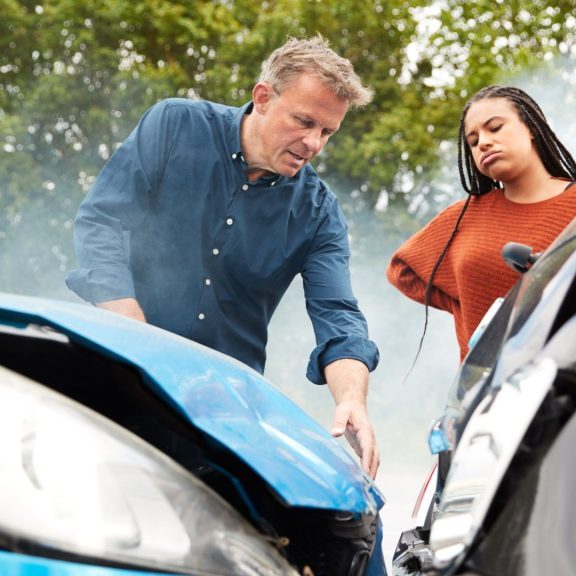
How to Avoid Car Accidents: Safety Tips Guide
Driving is a daily activity for many, but it comes with risks. Every year, thousands of accidents occur due to factors like distracted driving, speeding, and weather conditions. To help you stay safe on the road, here are some essential safety tips to reduce the likelihood of an accident.
1. Stay Focused: Avoid Distractions
Distractions are one of the leading causes of accidents. It only takes a moment of inattention for a crash to happen. Here’s how to minimize distractions:
Put your phone away: Texting or checking your phone while driving is dangerous. Use hands-free devices if necessary, but keep your focus entirely on the road.
Avoid multitasking: Eating, adjusting your radio, or grooming while driving can take your eyes off the road. Prepare before you leave.
Stay focused on driving: Be aware of your surroundings and concentrate on the road, other drivers, and potential hazards.
2. Keep a Safe Following Distance
Tailgating reduces your reaction time if the car in front of you suddenly stops. A good rule is the “3-second rule”:
3-second rule: Maintain a distance where it takes at least 3 seconds to pass the same point as the car ahead. In bad weather or at night, increase the distance to 4-5 seconds.
Extra caution: If you are behind larger vehicles like trucks or buses, give even more space, as they require longer stopping distances.
3. Use Turn Signals for Every Lane Change and Turn
Turn signals are a crucial communication tool for drivers:
Signal early: Let other drivers know your intentions with plenty of time to react.
Consistency: Use your signals even if you think the road is clear. Other vehicles or pedestrians may be hidden in your blind spots.
4. Adjust Your Speed for Conditions
Driving too fast or too slow for road conditions can increase accident risk. Here’s how to adapt:
Speed limits: Always follow posted speed limits, but reduce your speed in poor weather conditions like rain, snow, or fog.
Slippery roads: Slow down even more in icy or wet conditions to prevent skidding or hydroplaning.
Construction zones: Reduce speed when approaching roadwork areas to avoid unexpected obstacles or workers.
5. Check Blind Spots
Always check your blind spots before making a lane change:
Use mirrors: Adjust your side and rearview mirrors for optimal visibility, but don’t rely solely on them.
Look over your shoulder: Quickly glance to ensure no cars or motorcycles are in your blind spot before changing lanes.
6. Maintain Your Vehicle Regularly
A well-maintained car is a safer car. Make sure to:
Check brakes and tires: Inspect your brakes for wear and your tires for proper inflation and tread depth.
Lights and signals: Ensure all headlights, taillights, and turn signals function correctly.
Windshield wipers: Replace wipers to maintain clear visibility in bad weather.
7. Be Cautious at Intersections
Intersections are common locations for collisions. Stay safe by:
Stopping entirely: Always come to a complete stop at red lights or stop signs and look both ways before proceeding.
Watch for red-light runners: Even with the green light, glance around to ensure no one is speeding through their red light.
Yield when appropriate: Give the right of way to other drivers or pedestrians when required.
8. Drive Defensively
Defensive driving is key to accident prevention. This means anticipating potential dangers and being prepared to react:
Expect the unexpected: Always be on guard for sudden lane changes, stops, or mistakes by other drivers.
Keep scanning: Look ahead for potential hazards, and continuously check your mirrors to stay aware of your surroundings.
Avoid aggressive drivers: If you encounter aggressive or reckless drivers, stay calm and avoid engaging. Let them pass if necessary.
9. Don’t Drive Under the Influence
Alcohol and drugs (including some medications) impair your ability to react quickly:
Designated driver: Always have a designated driver if you plan to drink.
Know your limits: Even prescription medications can impair driving. Check the labels of medications for warnings about drowsiness or slowed reaction times.
10. Buckle Up
Seatbelts save lives. Make sure that:
Everyone is buckled: Ensure that you and all passengers are wearing seatbelts, even on short trips.
Correct usage: Make sure seatbelts are worn correctly, with the strap crossing the chest and resting on the hips.
11. Watch for Pedestrians and Cyclists
Pedestrians and cyclists can be hard to see, especially in bad weather or at night. To avoid accidents:
Look twice: Always double-check crosswalks, intersections, and residential areas for people crossing.
Pass cyclists safely: Give cyclists ample space when passing, and watch for hand signals indicating their intentions.
12. Stay Calm and Avoid Road Rage
Aggressive driving and road rage are dangerous. Stay calm behind the wheel:
Stay patient: Avoid weaving or tailgating if you encounter slow drivers or heavy traffic.
Let it go: If someone cuts you off or drives recklessly, don’t escalate the situation—your safety comes first.
Conclusion
Accidents can happen in the blink of an eye, but many can be avoided by following these basic safety tips. By staying alert, driving defensively, and maintaining your vehicle, you can significantly reduce your risk on the road.
Let’s commit to making our roads safer by practicing mindful driving daily! Remember: Safe driving isn’t just about protecting yourself—it’s about safeguarding everyone on the road.
